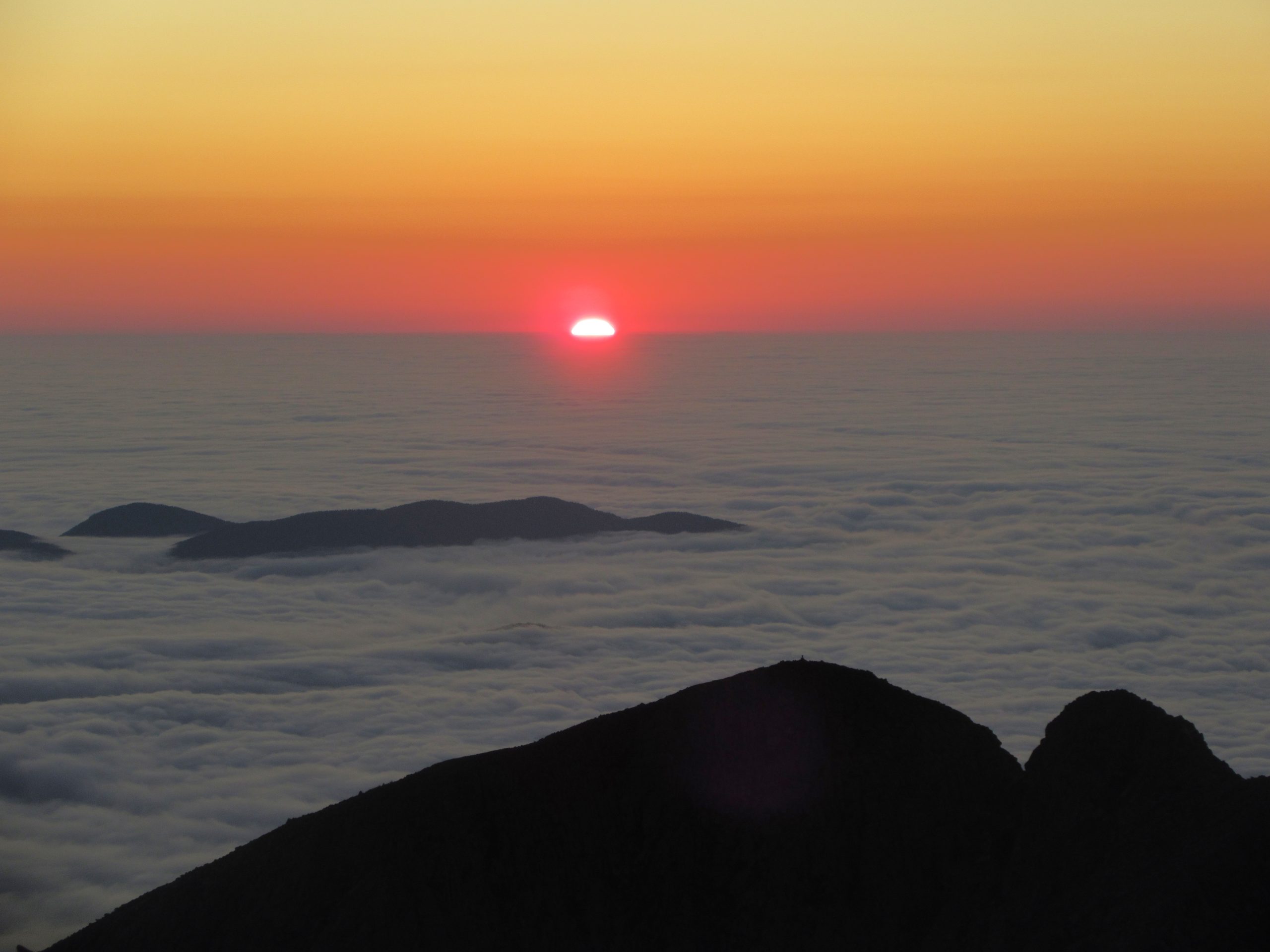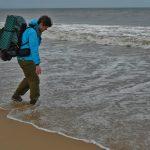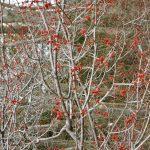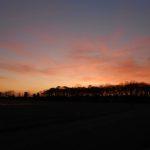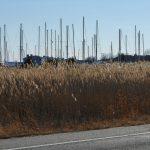Last week, Maine’s Department of Agriculture, Conservation, and Forestry’s weekly foliage report announced that the Moosehead Lake region was at peak fall color. Over my days off from the Monson A.T. Visitor Center, I set out to make the most of autumn’s beauty. I knew how quickly this bright season would pass.
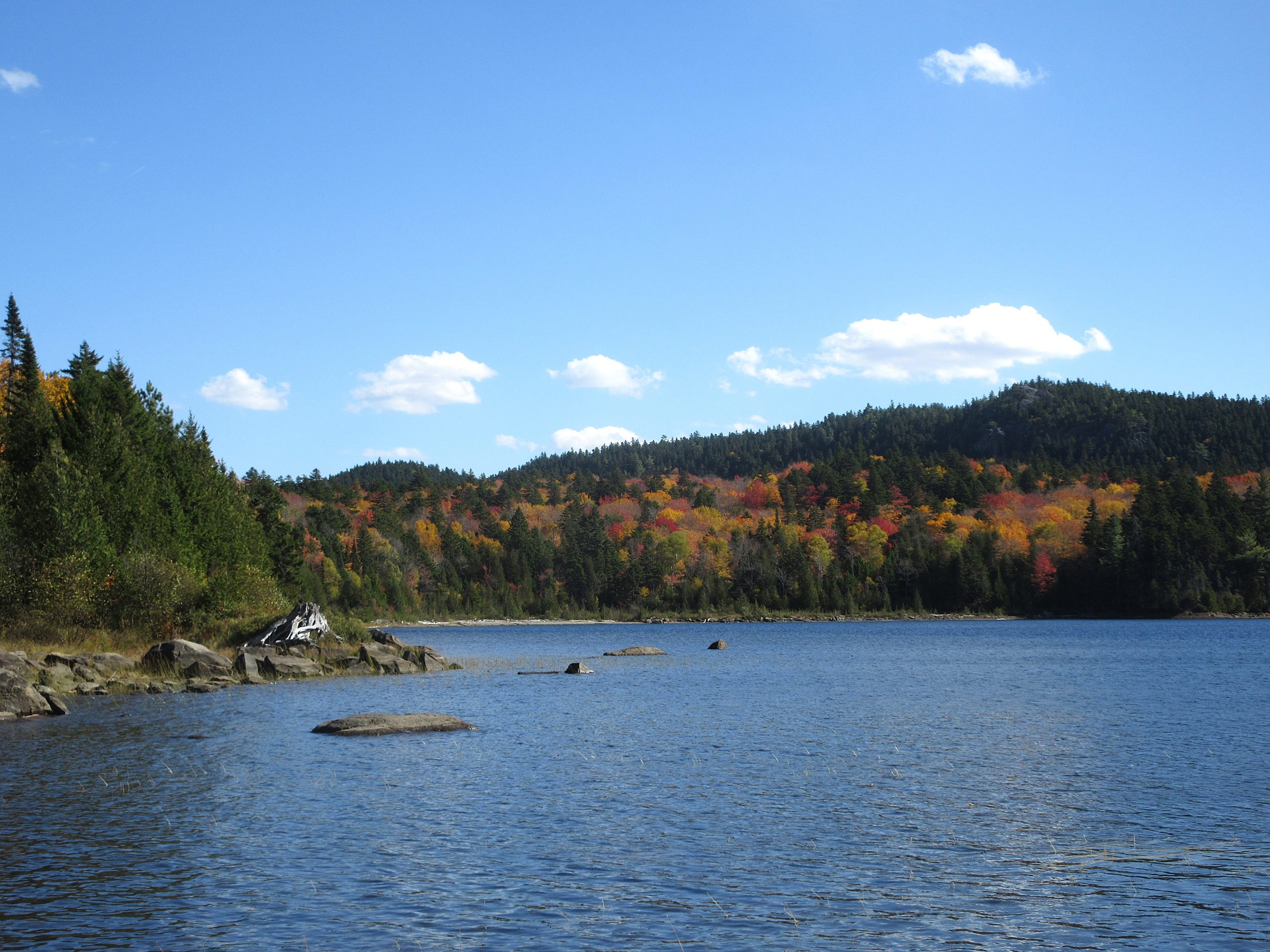
I began with a hike through the Little Moose Public Land, west of Moosehead Lake. Little Moose is part of Maine’s 600,000 acres of Public Reserved Lands, which are managed for wildlife habitat, recreation, and sustainable timber harvesting. The system dates back to Maine’s separation from the Massachusetts in 1820, when the newly-formed state set aside lots in each unincorporated township for public benefit. Timber sales fund recreational infrastructure and wildlife protection. I took the photo above from the shore of Big Moose Pond. My goal was the rocky outcrop atop the ridge of Little Moose Mountain, at the right of the photo.
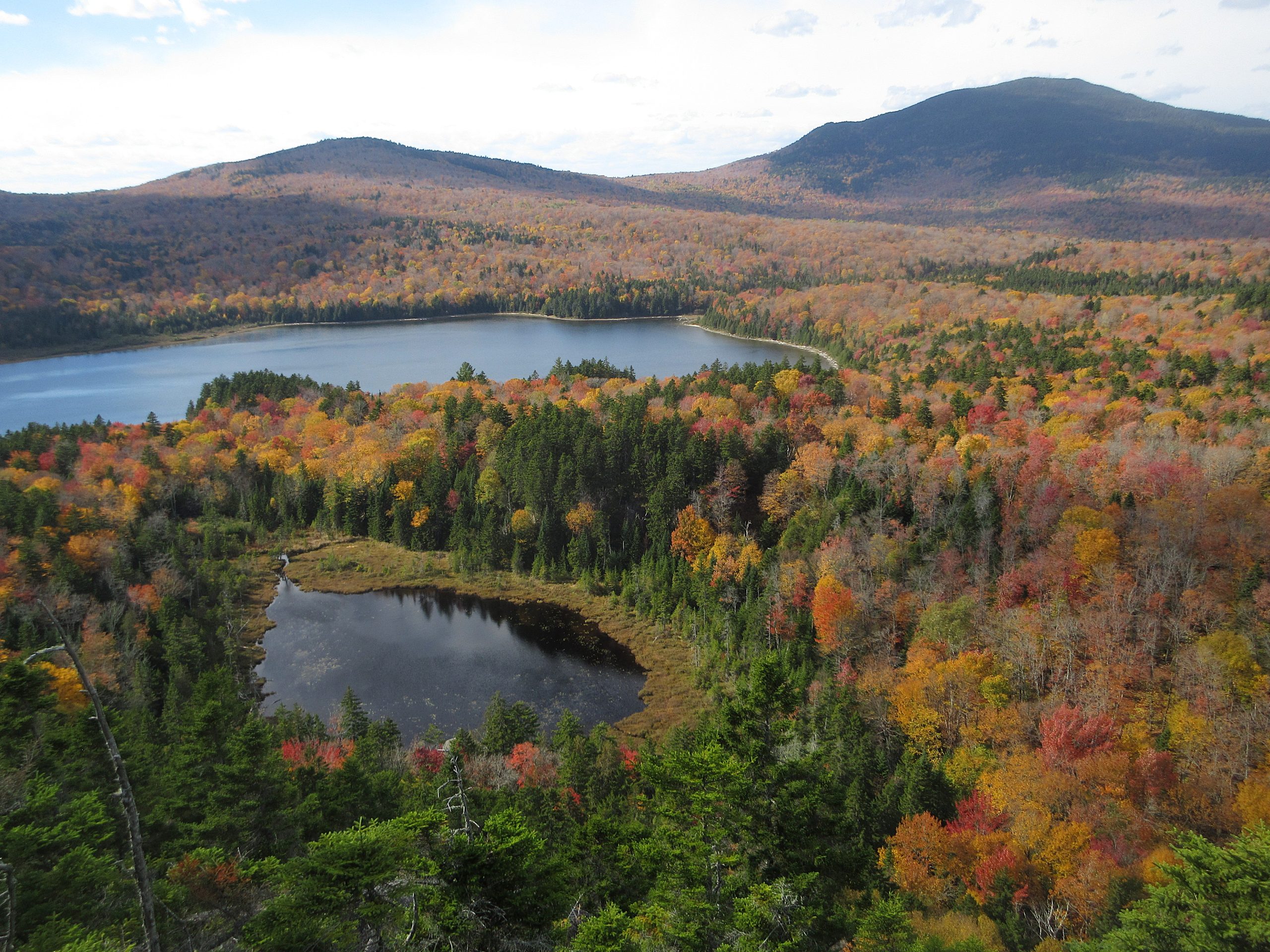
As I walked along the trail, fallen leaves crunched underfoot, and I breathed their musty sweetness. This was the view from the outcrop, looking across Big Moose Pond toward Big Moose Mountain. Three months of dry weather meant that some trees lost their leaves prematurely, but many trees still flaunted yellow and orange foliage.
Late that evening, I headed up to my cabin east of Moosehead Lake. I decided to forgo my headlamp as I unloaded my car; I do this from time to time as an exercise in keeping my senses sharp. In the dimness, I thought I saw a dark form on my driveway, under fifty feet from where I stood. As my eyes groped for more details, I made out a large body standing on four slender legs. A moose! It was likely passing from the wetland on the western edge of my land to the wetland on the eastern border.
As I settled into my cabin, much-needed rain began to fall. I fell asleep to the comforting sound of raindrops drumming on my roof.
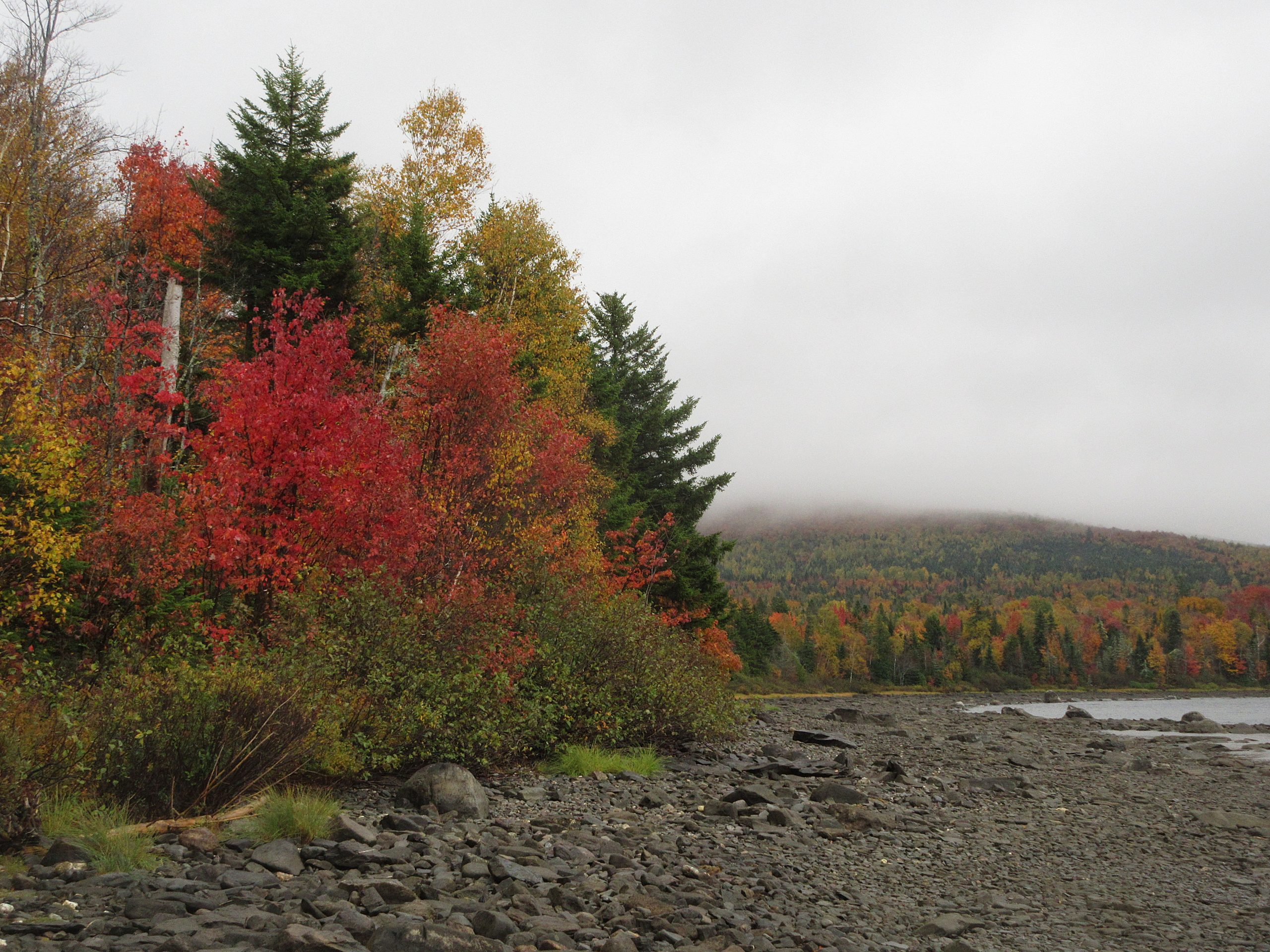
In the morning, the weather remained misty. The colors of the foliage were vibrant in the muted gray light.
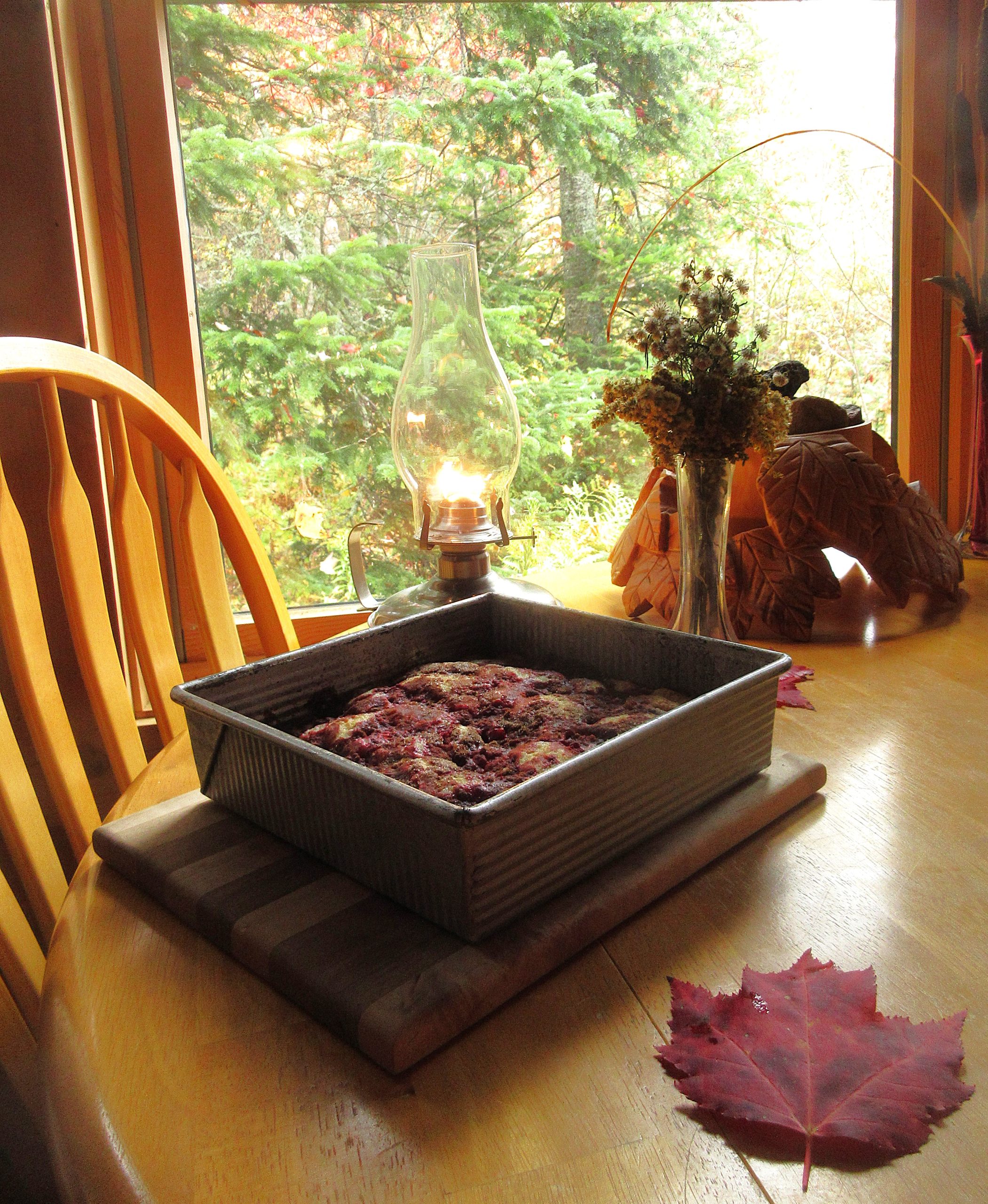
In the mood for a treat, I made a cake with raspberries that came from a patch along the banks of the Piscataquis River. Being off the grid, I used an old-fashioned hand-crank mixer for the batter and baked it in my propane-fueled oven.
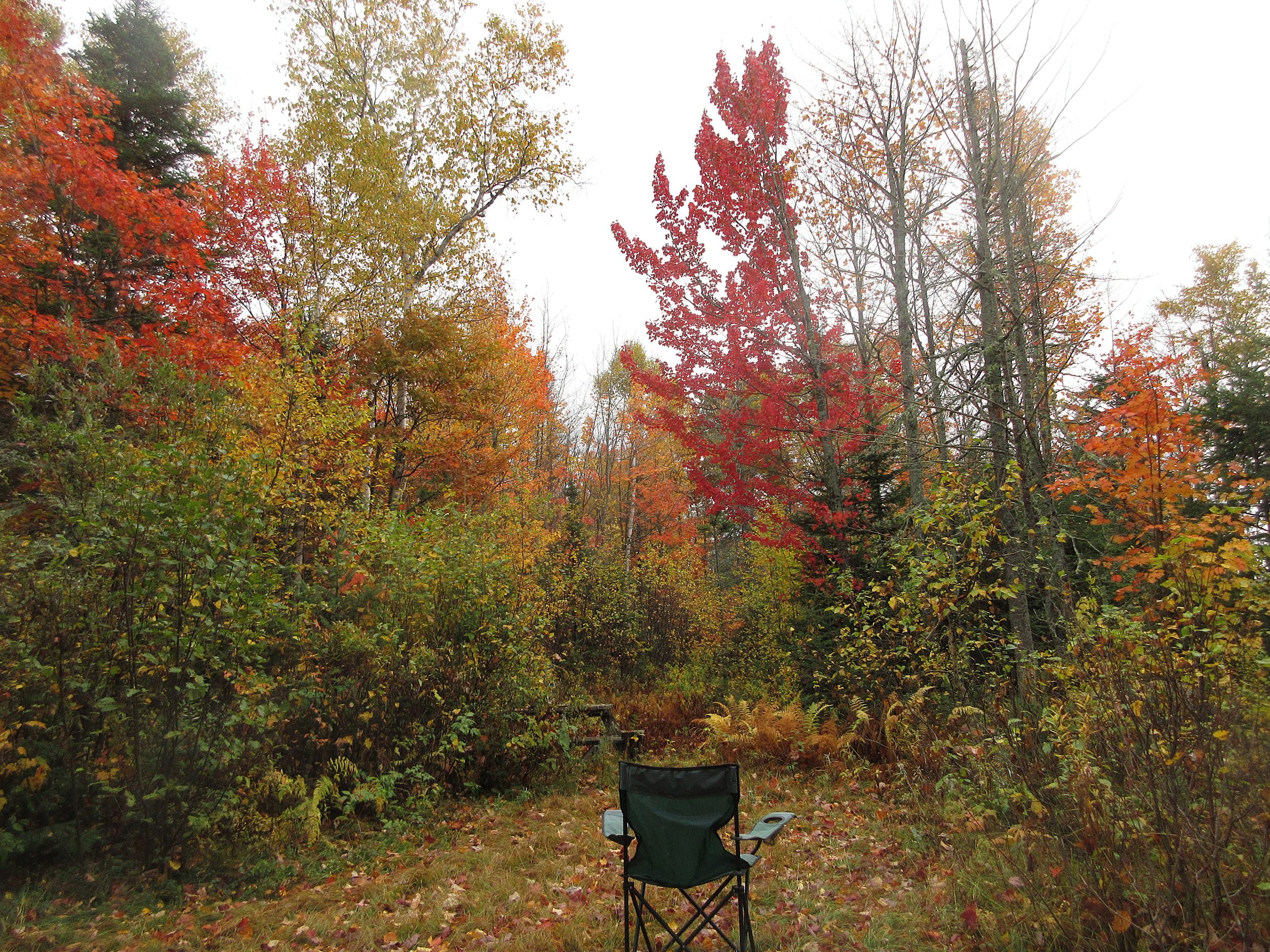
I set up a chair outside where I could enjoy the trees while I ate.
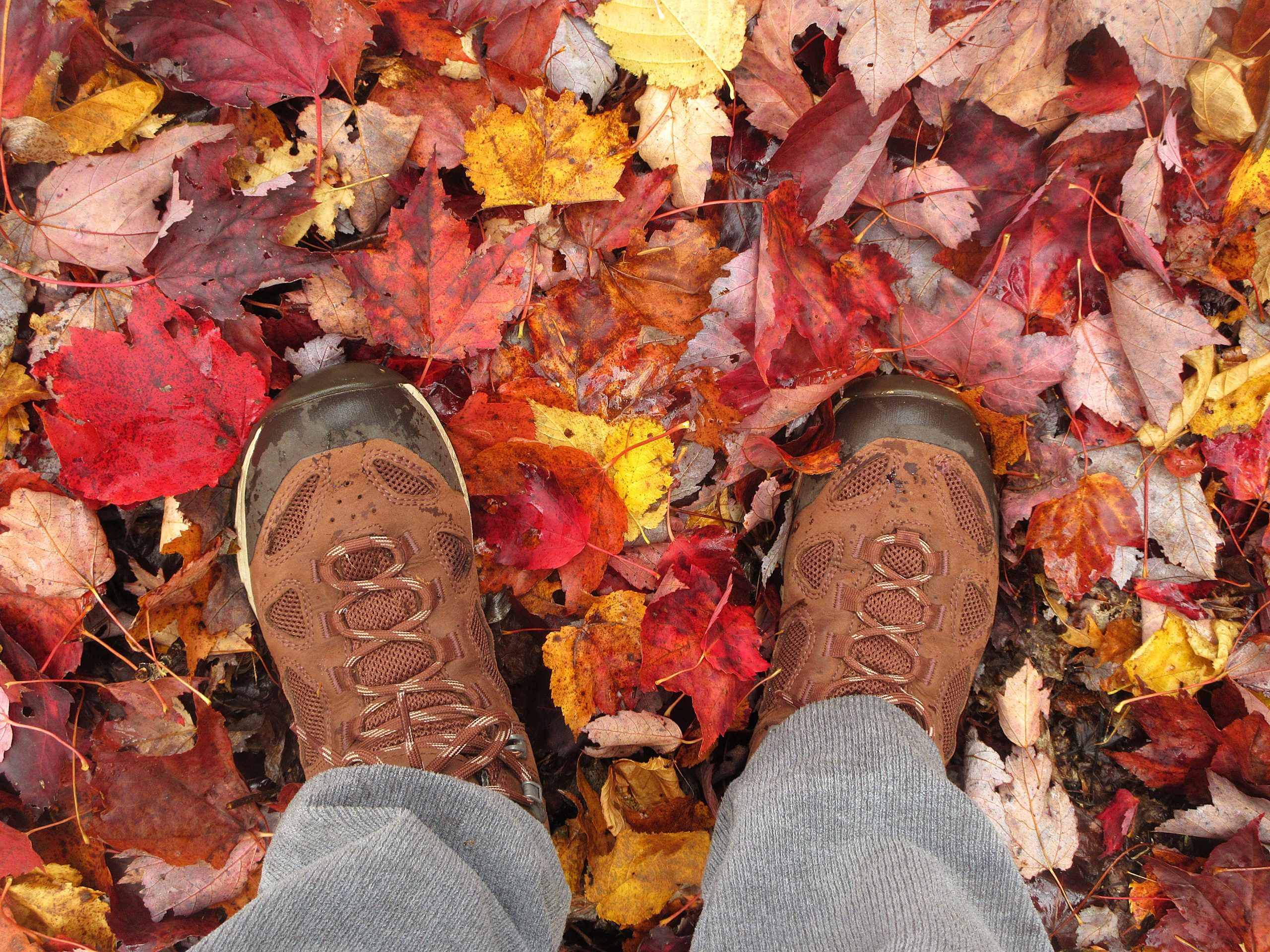
Then I went for a slow-paced walk, pausing whenever anything caught my fancy. Fallen leaves formed a bright carpet under my feet. The air was redolent with scents of autumn. I savored the rich, spicy sweetness of hay-scented fern (Dennstaedtia punctilobula). Here and there, I inhaled a tang I associate with plant matter decaying back into the soil. The odor is pungent but somehow pleasing to my nose. The sounds, too, spoke of autumn. Canada geese honked overhead, signaling their departure for the south. Crickets buzzed in the background.
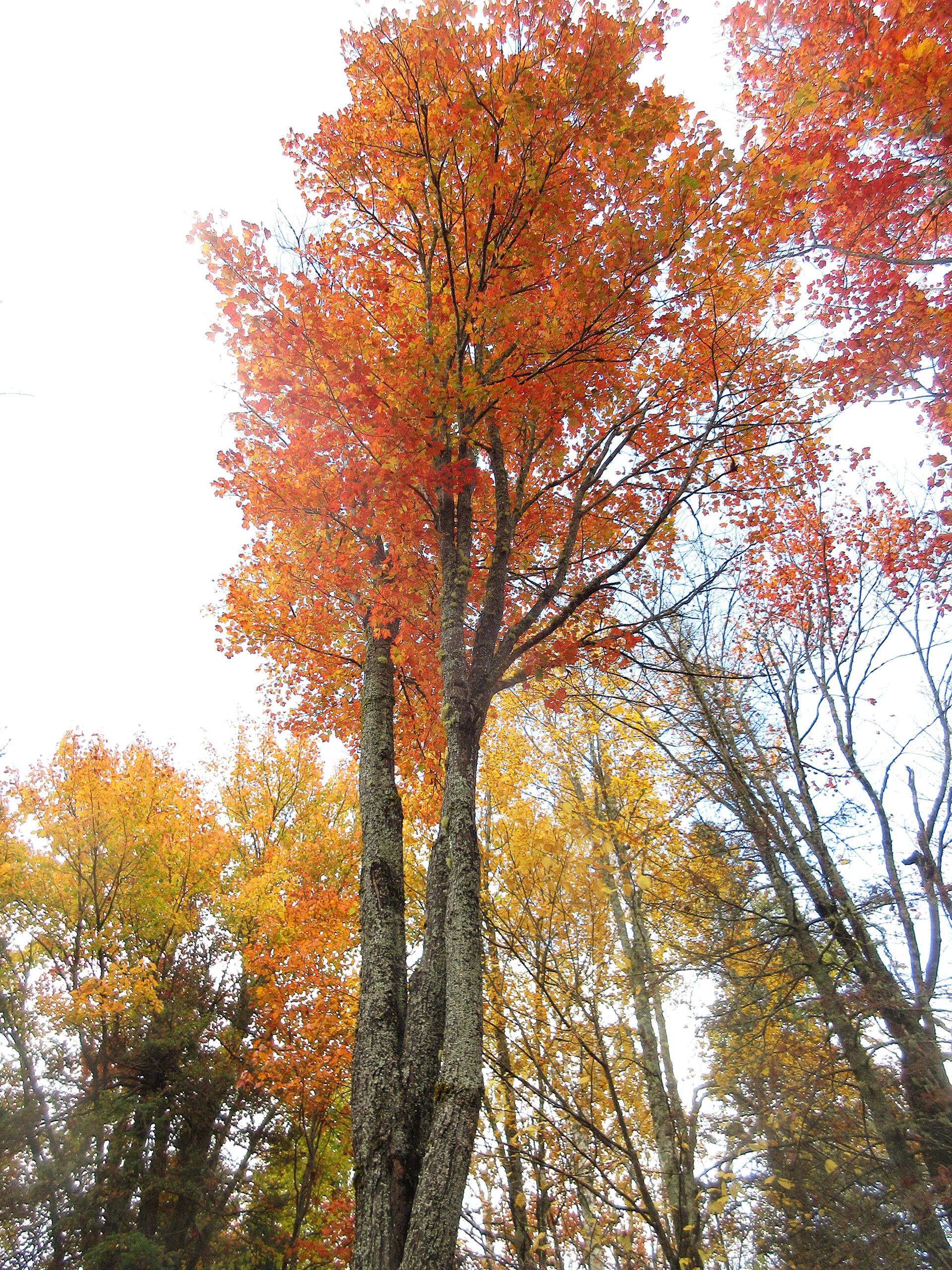
To me, nature is the ultimate art gallery, with exhibits in continual evolution. Every walk through the woods offers astonishment and new delights.
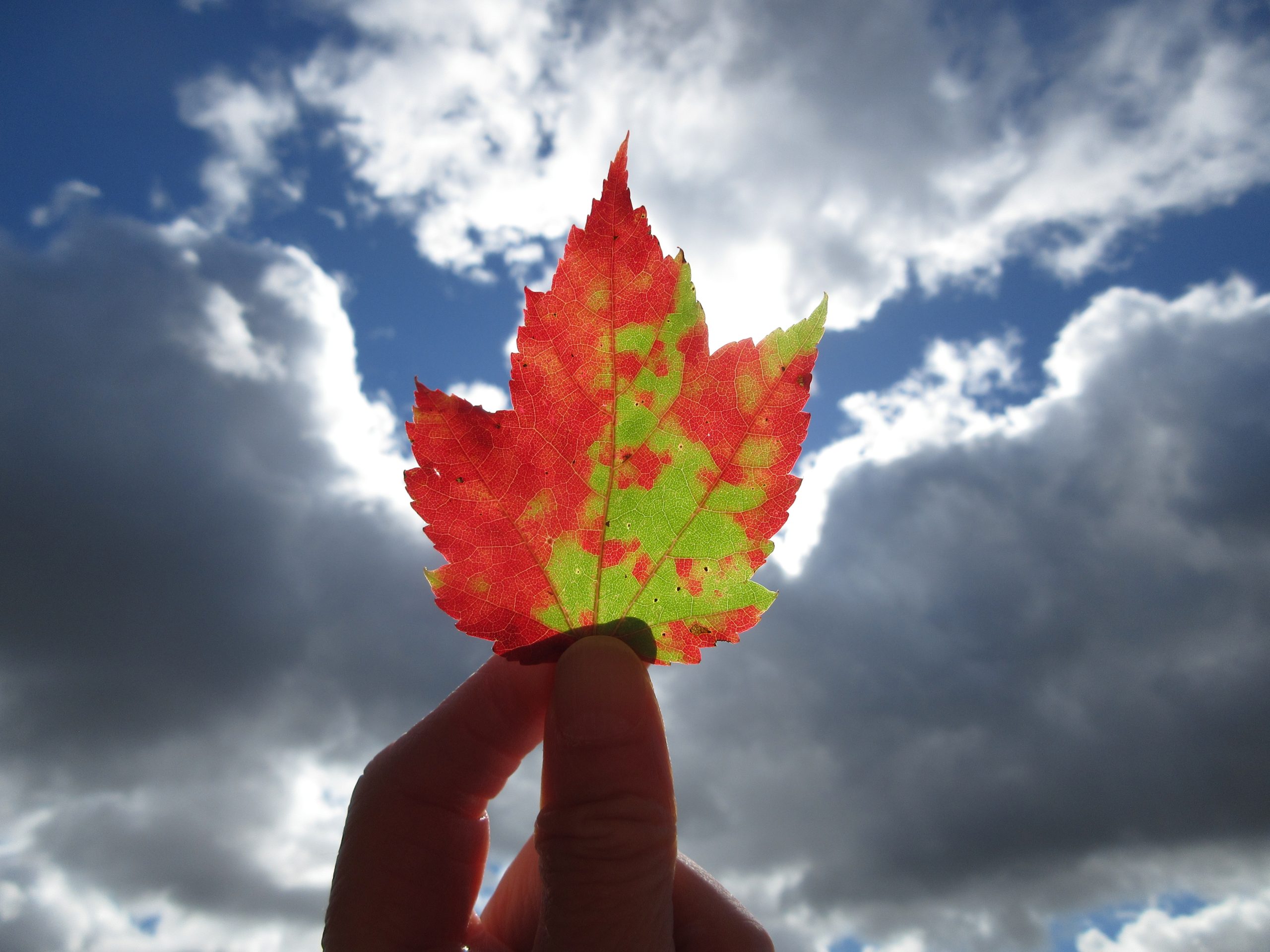
I look for leaves that show particularly vibrant colors or striking patterns.
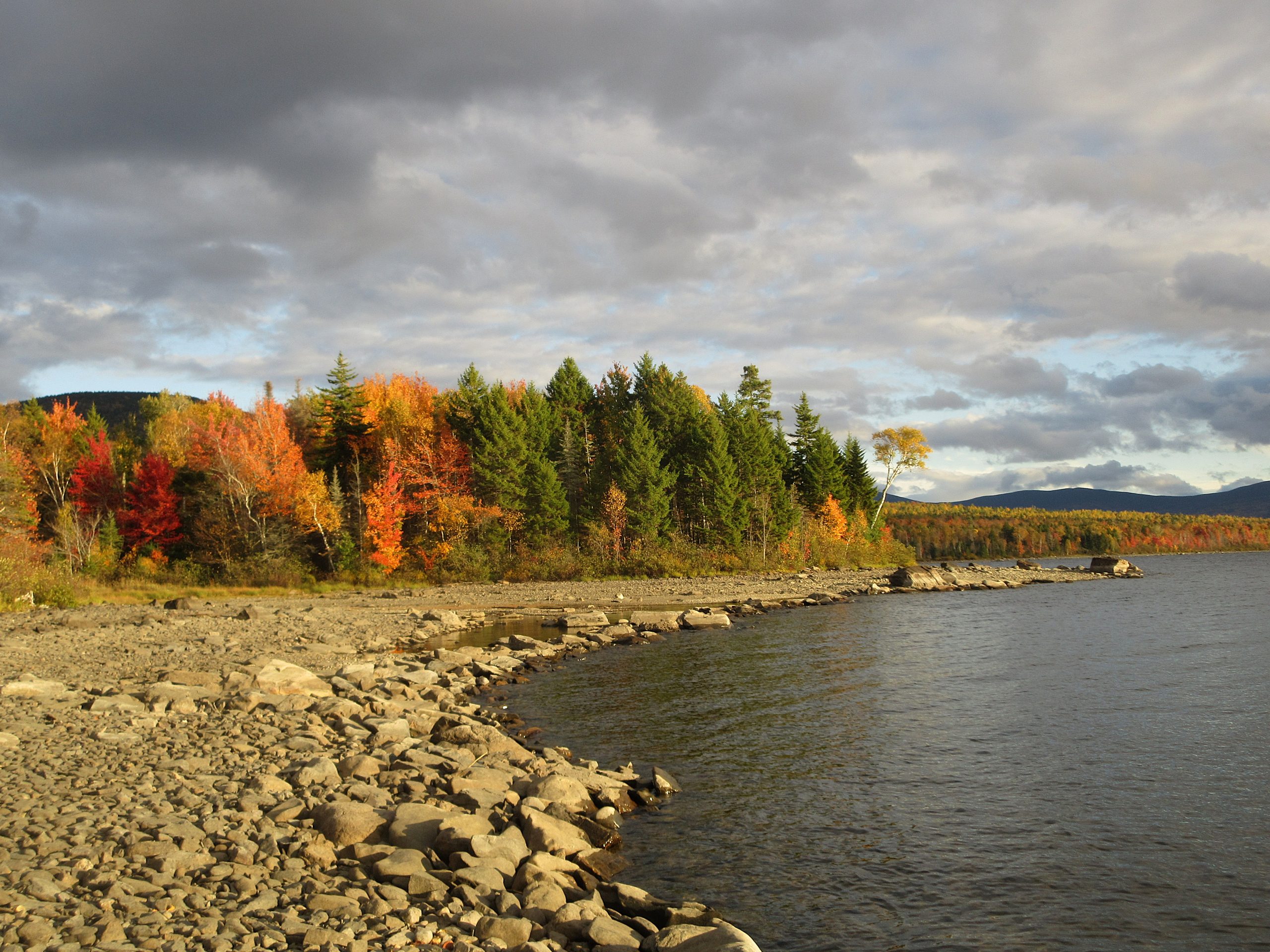
The slanting golden light of late afternoon highlighted the colors along my shore.
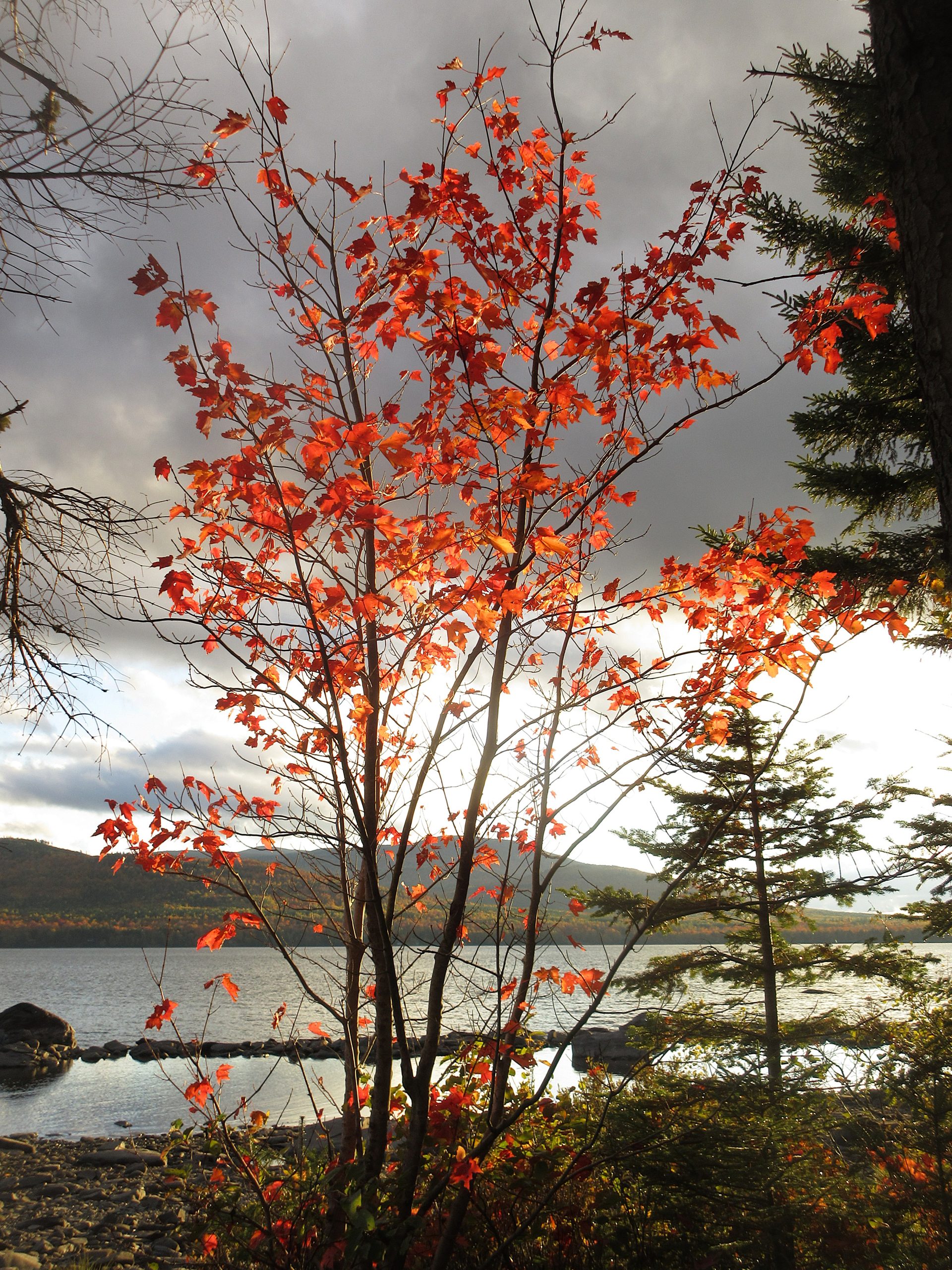
The sinking sun ignited the leaves of a small maple.
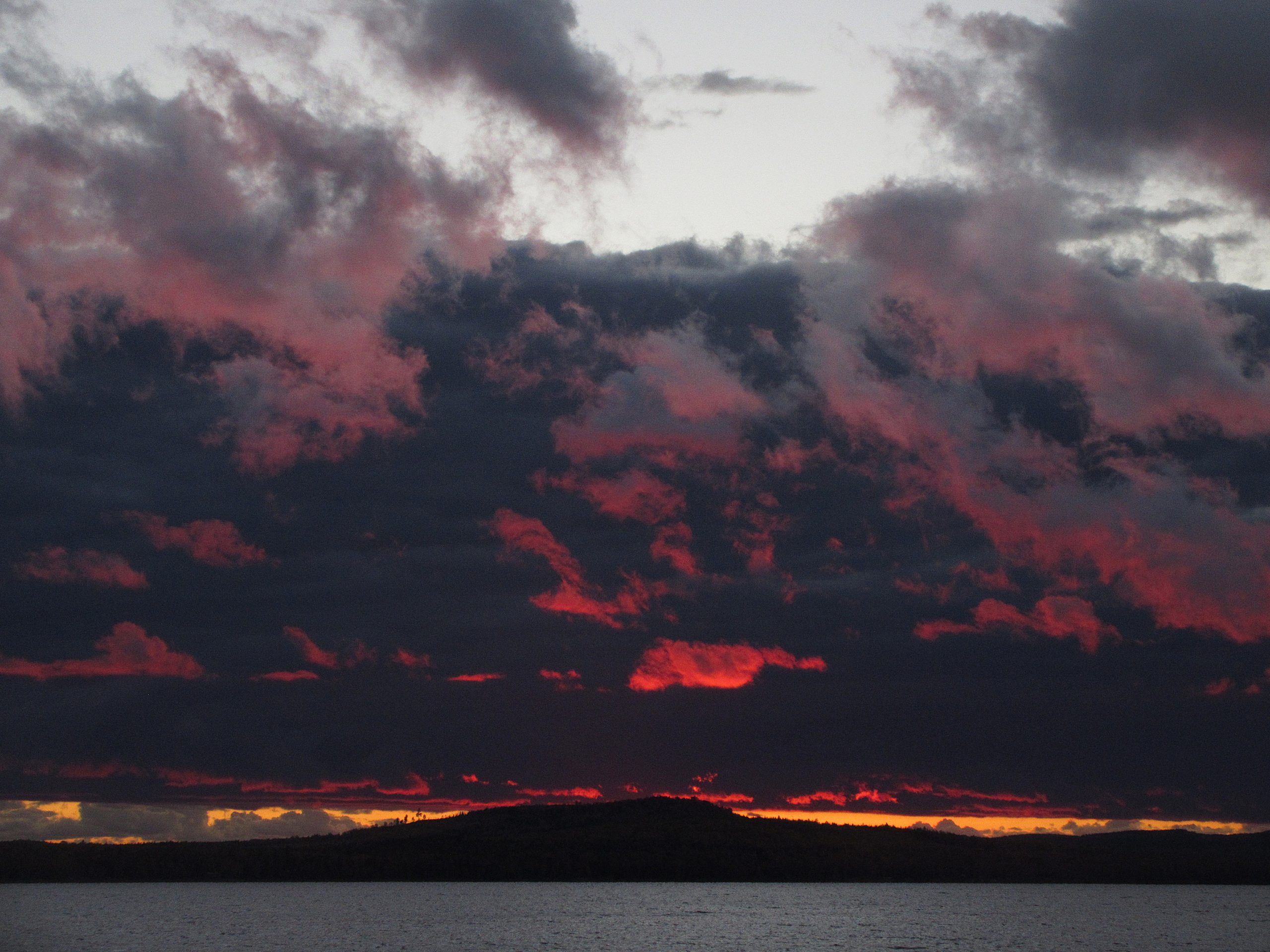
Lingering clouds produced a dramatic sunset. At this time of year, I always feel a bit surprised by how early night falls. We’ve lost more than four hours of daylight since the summer solstice.
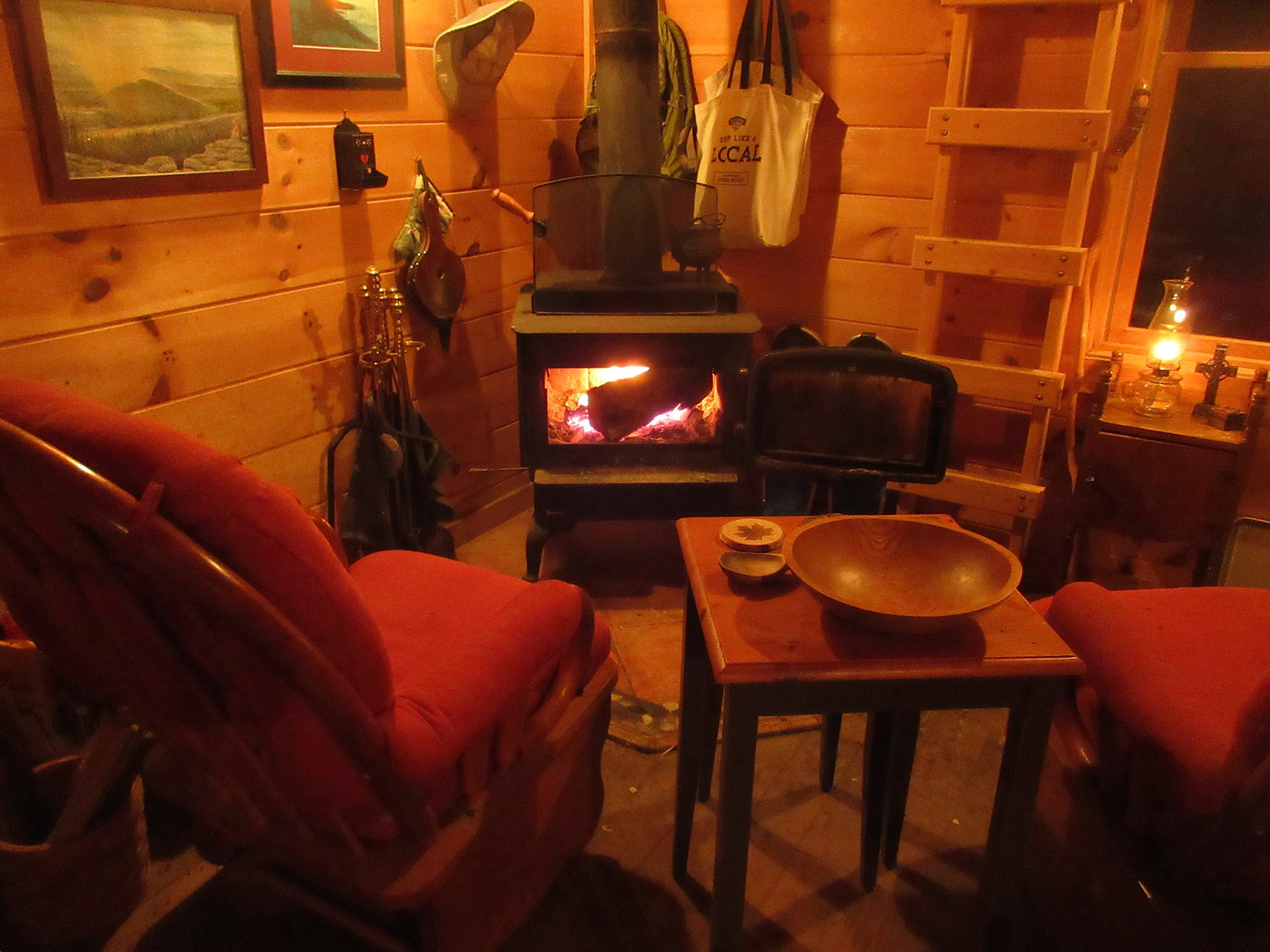
To me, the cozy warmth of a fire in my woodstove on a cold evening is one of life’s greatest pleasures. A mug of hot tea, made from wild mint I collect on my shore, enhances the experience.
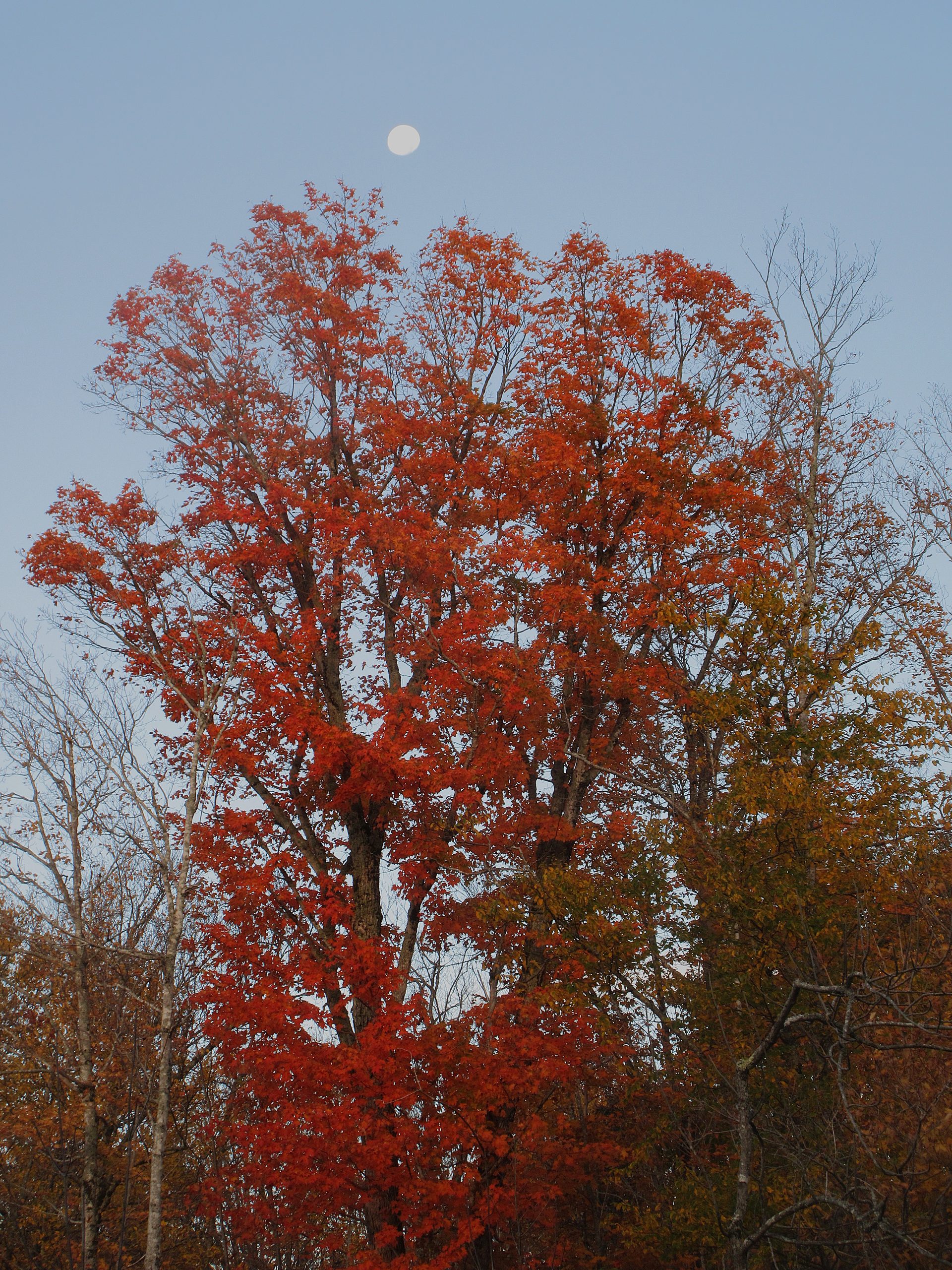
The next morning, I got up before sunrise to drive back to the visitor center in time for its eight o’clock opening. As a reward for my efforts, I caught a glimpse of the waning moon above a fiery maple.
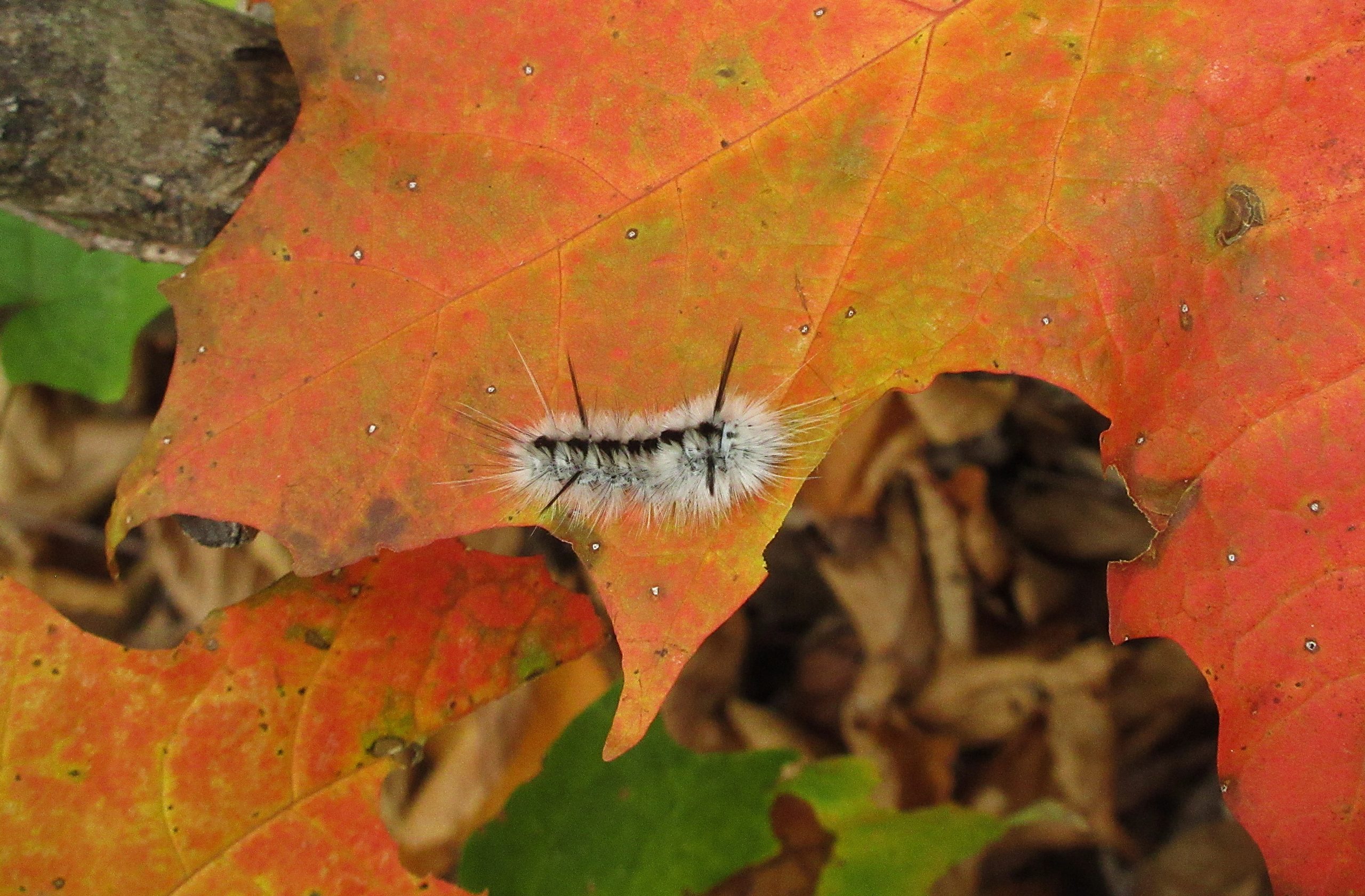
Thanks to the kindness of a volunteer who covered the visitor center for an afternoon, I was able to squeeze in one more foliage hike. I chose Eagle Rock, just north of the Little Moose Public Land. Along the trail, this small creature caught my eye: a hickory tussock moth caterpillar (Lophocampa caryae), crawling on a sugar maple leaf. Its striking appearance serves as a warning: don’t touch! Its spiky hairs are quills that will puncture your skin, releasing a toxin that causes an unpleasant rash.
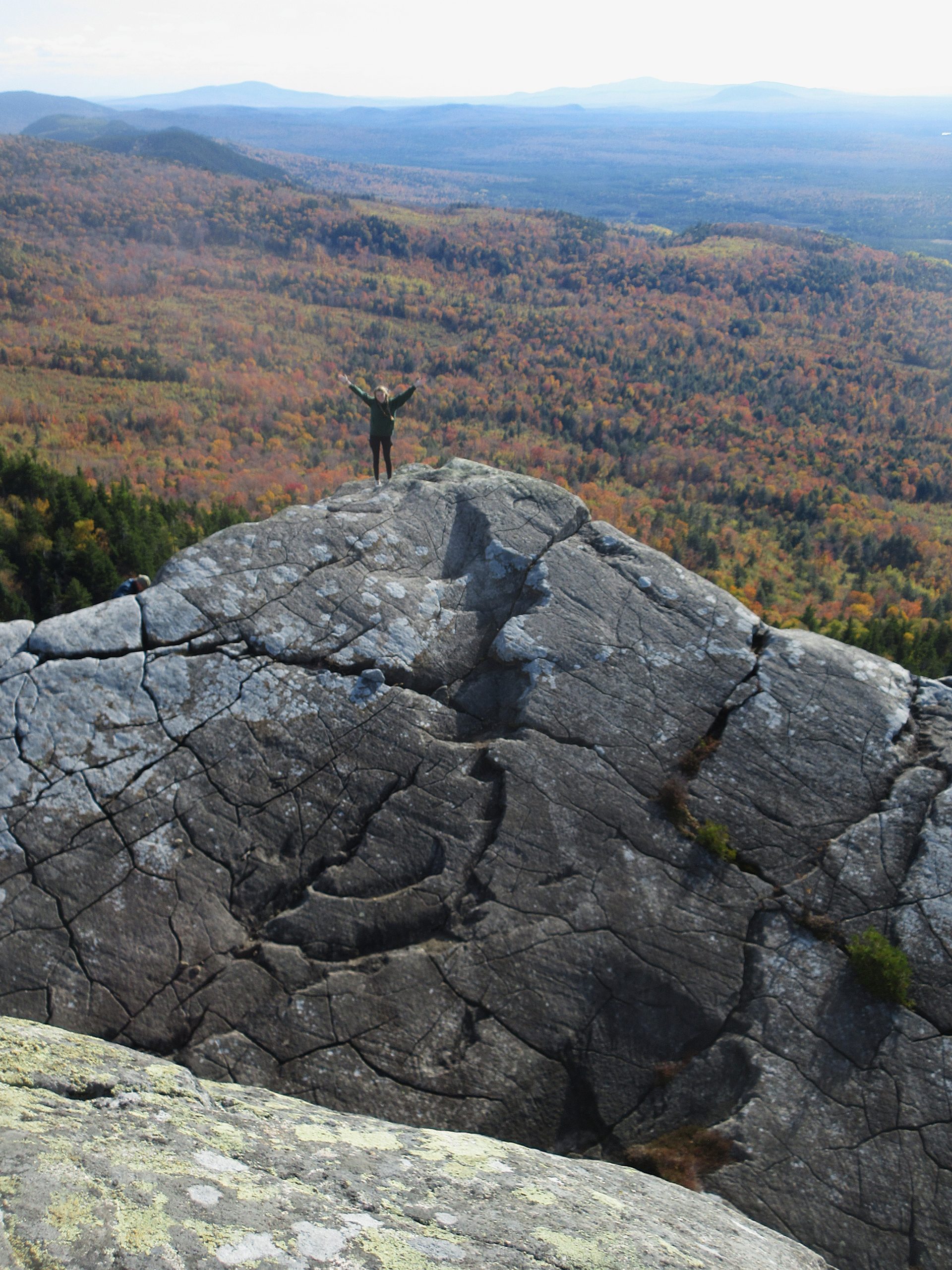
I shared the summit with a handful of other hikers. The young woman in this photo seemed to embody the exuberant joy of a perfect autumn afternoon.
I lingered for over an hour, remaining after the other hikers had left, reveling in the three-hundred-and-sixty-degree view. As is my custom, I sought out the peaks I’ve climbed before: Boundary Bald to the northwest; to the east – across Moosehead Lake – Kineo, Little Kineo, Lobster, Little and Big Spencer Mountains, Hamlin and Baxter Peaks on Katahdin; Big Moose to the southeast; and to the southwest, Moxie Bald and its North Peak, Sugarloaf, Crocker, and finally Avery and West Peaks of the Bigelow Range. Wherever I go in the Maine Woods, I strive to impress the landscape upon my mind and heart. My goal is to carry a map within, so that I will always know my way home.

